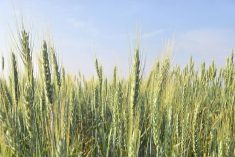Winnipeg (MarketsFarm) – The western Canadian feed grain market is showing signs of finding a bottom, as buyers wait to get a better handle on the quality of the grain still unharvested across the Prairies.
Feed barley is currently trading at around C$200 per tonne in southern Alberta, while feed wheat bids are around C$210, according to the latest Prairie Ag Hotwire data.
“For barley, it appears we have hit the bottom,” said Tracey Green, of Market Master Ltd. in Edmonton, Alta. She said some premiums were starting to appear, but prices have yet to move much off of their lows end user bids have generally held steady over the past week.
Read Also

USDA considering economic aid for farmers this fall, says secretary
The U.S. Department of Agriculture is working with Congress to evaluate whether economic aid might be needed for the nation’s farmers this fall amid trade disputes and record-high yields, Agriculture Secretary Brooke Rollins said on Monday.
Feedlots are still largely buying on a hand-to-mouth basis, but “as the weather gets colder, more barley is going through the cattle,” said Green.
The feed wheat market has also leveled off after declining for the past two months. There were concerns that more wheat would grade as feed this year due to the adverse harvest, but that has not been the case so far in 2019.
“We don’t have a lot of information on the quality of what’s being harvested, because there’s still so much out there,” said Green. While protein levels were coming in on the lower side, she said the grades for what was harvested were beating expectations despite the rain and snow.
Green noted some similarities to 2018, when expectations had been for more feed wheat than eventually materialized.
With the poor harvest weather, Green said farmers may want to look at getting their wheat re-graded. Depending on the export program, buyers may end up bumping up the grade or changing their specs a bit.
Some elevators are already offering drying services, while many feedlots are taking grain that’s higher moisture and are being softer on their discounts, said Green. She said premiums for dry grain were also available.














